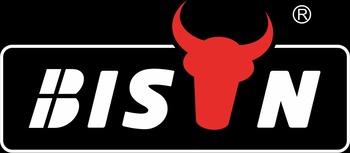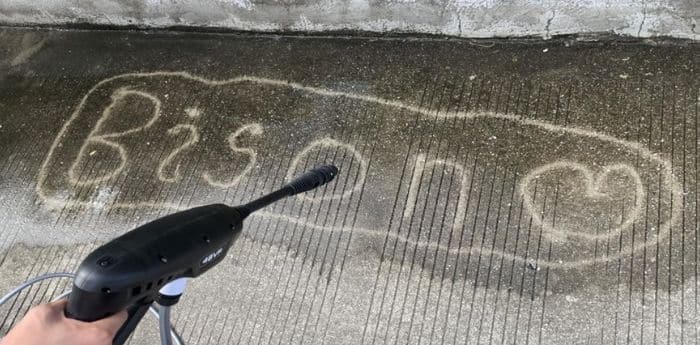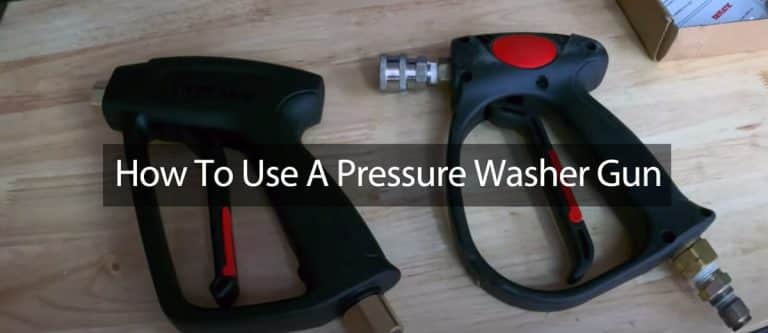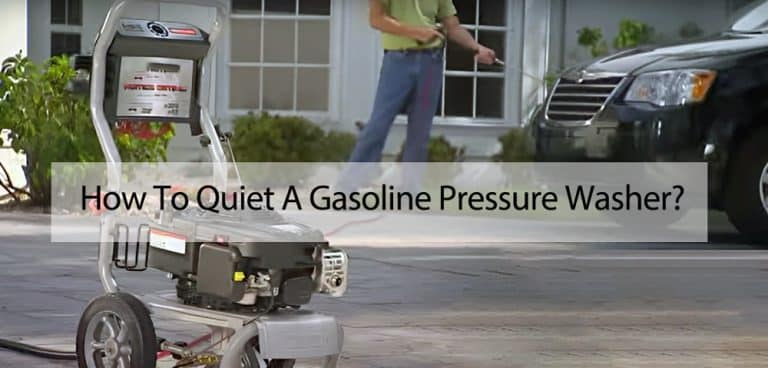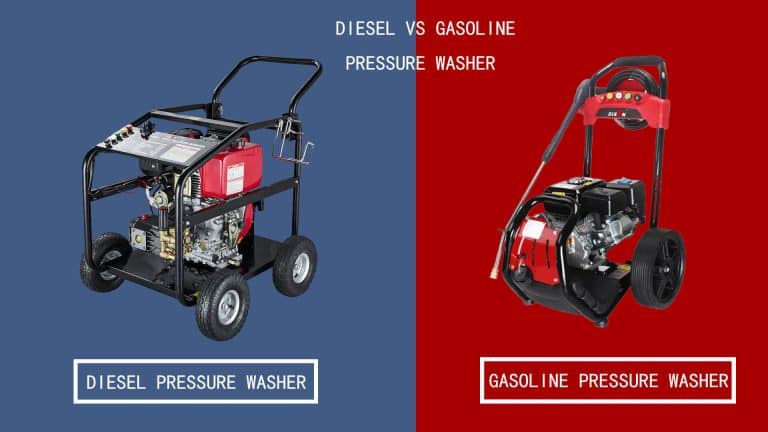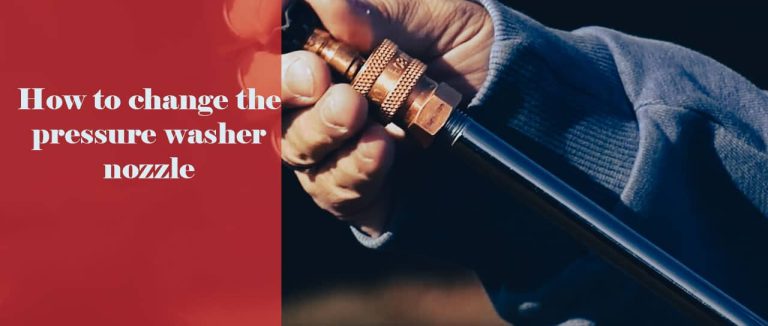After a pressure washer has been used for the last time of the year, it is often put away without any maintenance. Of course, since it’s used to clean tough stuff like mud, mold, grime, and graffiti, it’s sure to take a hard hit on the job.
If you want a long time service, you must keep in mind to follow maintenance procedures before and after use. Bison as a professional China pressure washer manufacturer, we have tremendous pressure washers maintenance experience. Following these steps will surely get more seasons out of your device.
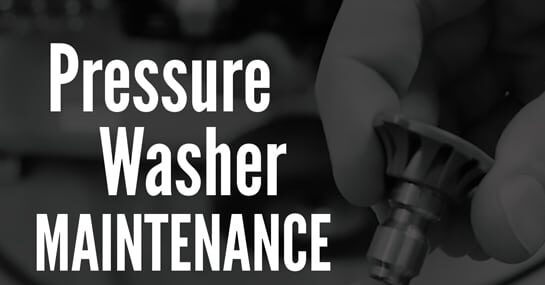
Regular maintenance will ensure the safety and reliability of your pressure washer. Remember to follow these steps before and after each use to make sure the device is in proper working order.
Before use Maintenance
Check the “O-ring” on the end of the high-pressure hose for wear. Damaged O-rings can cause severe problems, including leaks and even injury during use. If damaged, replace it before use.
Check the nozzle on the wand’s end to ensure it locks securely into place.
Be careful not to allow debris, dirt, or anything else to clog the nozzle.
If you are using a gas type pressure washer, ensure it has fresh gas and oil before starting it. Only use gasoline that has been sitting in the tank since last season. If you have old gasoline, add some stabilizers and replace it with fresh gasoline.
Check spark plugs for corrosion. If your spark plugs are corroded, they can cause difficult starting and inefficiency during use. Replace corroded spark plugs before use.
Keep the nozzle open while the equipment is running. Also, leaving it running with the nozzle closed will create pressure in the hose and possibly cause damage.
Only run a pressure washer with an adequate volume of water. Enough water in the unit can prevent the pressure from increasing too much.
After use Maintenance
Switch the power switch to “off” and unplug the device. Do this first to avoid injury or damaging the washer.
Locate chemical/detergent entry and clean thoroughly with water. Ensure any residue or buildup is rinsed off, and the water from the inlet is clear.
Remove dirt and grime from the inside of your pressure washer to prevent any erratic behavior while in use.
Drain any excess water before storing. Water left in will attract insects, grow mold and produce bacteria.
Store your pressure washer away from the elements by keeping it well-ventilated and away from sunlight, rain and snow. Ensure it is out of reach of children who might harm themselves.
How to perform pressure washer maintenance (step by step)
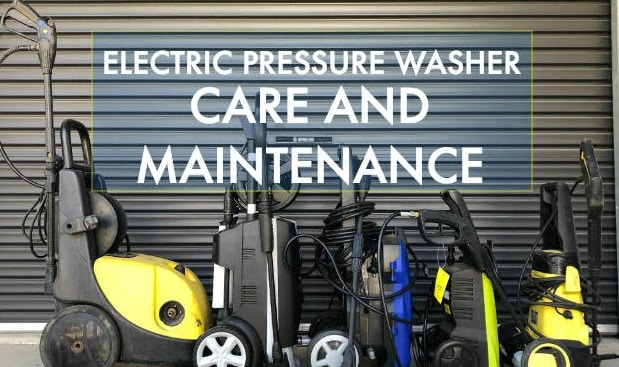
You’ll notice that most maintenance services involve checking that your pressure washer is in good shape. You hardly need to disassemble anything. And tasks you have to do manually—such as changing oil or spark plugs—are as easy as 5 minutes.
Below are instructions for all tasks.
Everything you should keep in mind about pressure washer storage
Let’s look at the correct way to store your electric pressure washer for 30+ days and all winter after each use.
After each use
Turning off
Following a series of steps is essential to keep your electric washer pump and lines free of water and detergent. This prevents minerals and traces of dirt from adhering to the pump components and causing damage over time.
Here are the shutdown steps; follow these steps to avoid problems:
- If you use soap, remove the black soap nozzle and replace it with a green or white nozzle. Now let the water run through for one minute to remove extra soap from the system.
- Shut down the engine. Pull the spray trigger for 10 seconds and let tap water flow through at low pressure. Now shut off the tap water and pull the trigger again to remove any remaining water and pressure from the system.
- Disconnect the gun and pump pressure hoses and the pump water hose. Roll up and drain the water in the pressure hose, then hang it on the hook for storage. Place the tip and gun in a storage location on the machine.
- After disconnecting all connections, pull the engine to recoil a few times to drain fluid from the pump further.
Storage location
The storage location of the pressure washer is critical. After completing the four steps above, you can roll your electric pressure washer to an area in your shed or garage for storage.
The best storage locations are:
- Clean and dry
- Keep away from stoves, dryers, etc.
- Avoid tripping or bumping into it.
A fitted, protective, breathable cover will help keep out dust.
Long term storage
Do everything in the “after every use” section and follow the steps below to keep your machine safe and ready to use when needed after a few months.
Engine (oil and fuel)
Two options for protecting the fuel system:
You can use a fuel stabilizer. If you’re planning to leave fuel in the tank during storage, add a fuel stabilizer to prevent the formation of acid and gum deposits. Add a stabilizer, then run the engine for a few minutes to cycle empty fuel. Tip the pressure washer to drain the fuel into the container. Then run the machine until it stops.
Pump
To protect the pump during storage, add a pump guard. The pump guard fills the pump cavity, protects its seals, and pistons from mineral deposits left by the water.
Once you have your pump protection product on hand, connect it to the garden hose inlet. Please press the button to release the lubricant into the pump until you see it spray out the outlet. The pump is now filled with a pump protector for long-term storage.
Care and maintenance of electric pressure washers
The five main benefits of electric pressure washers are:
- minimal maintenance
- Can be used indoors (no smoke)
- more affordable than natural gas
- no need to refuel
- Quieter
There is no doubt that electronics are more popular. Homeowners find it easy to justify the purchase as they only need to use it once or at the most twice a month.
Home electric pressure washers use an electric motor (generic or induction) with an axial or oscillating piston pump. It has a closed lubrication system, hence no oiling is required.
If a motor or pump stops working, replacing it is cheaper than repairing it.
Tip, hose, and gun care
A clogged nozzle is not suitable. It blocks flow and creates an upstream pressure buildup.
Use an unfolded paper clip or nozzle cleaner to remove debris and dirt. Move the wire a few times to make sure the orifice is clean.
As for the hose and gun, check each time you use them. Look for leaks and cracks/wear that could get worse and cause failure.
Pump maintenance for long-term and winter storage
Just as pumps for gas-powered machines require pump maintenance for long-term and winter storage, so do electric devices.
Using a pump protection product will protect the piston and seals from damage.
Pressure washer pump saver
Pump saver is a unique antifreeze and lubricant that protects your pressure washer pump from damage during long-term storage and winter.
You connect it to the pump’s inlet and press a button to fill it with lubricant.
It covers pistons and seals, preventing damage from residual mineral deposits.
It is a must-have for adequately maintaining your electric washing machine.
Get fuel stabilizer
Fuel stabilizer protects your engine during long-term storage or winterization.
You pour a small amount (around 15ml or so) into the tank, and it will keep it winter or months until the subsequent use.
Silicone grease for rubber O-rings
Apply silicone grease to rubber O-rings at the hose, pump, and gun connections to protect the rubber from corrosion, preventing cracks and leaks.
It is the best O-ring type for a power washing machine because it is waterproof and non-conductive.
